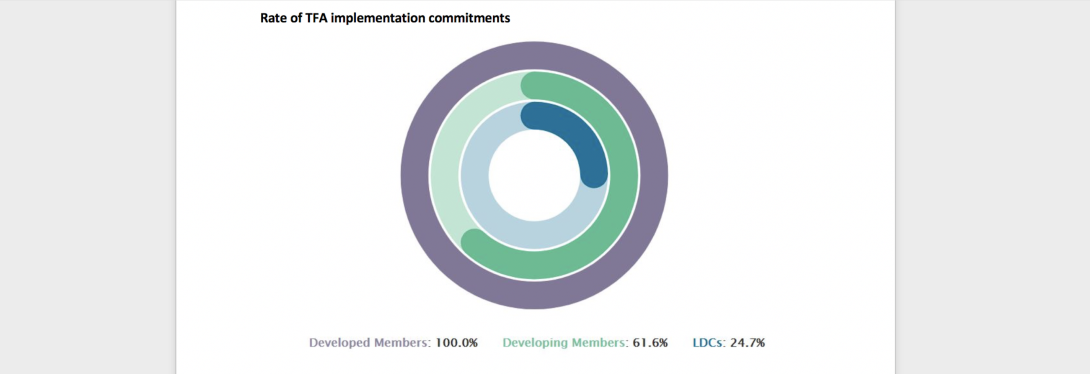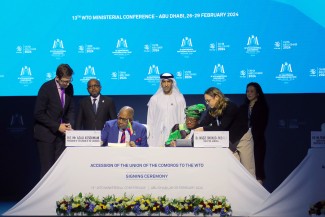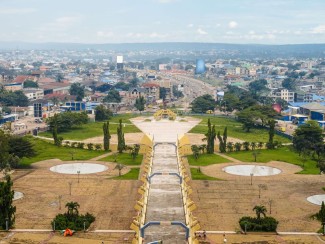|
|
|
The Trade Facilitation Agreement (TFA) has generated much expectation in terms of development returns for least developed countries (LDCs). Ratified in February 2017, the first multilateral treaty to be adopted by the World Trade Organization (WTO) since its creation is designed to reduce transaction costs and stimulate trade as an engine of growth and poverty reduction.
Trade facilitation has emerged as an important priority of both developing countries and development partners. Since 2005, annual donor commitments have increased fivefold and US$3.9 billion has been disbursed in aid for trade facilitation.
Yet are LDCs engaging as anticipated in the TFA?
Tailor-made implementation and state of play
The TFA is primarily concerned with changing the way border agencies operate in order to reduce trade costs. Recent estimates suggest that the potential cost reduction from full implementation of the TFA is 16.5% of total costs for low income countries. Measures with the highest potential impact include harmonising and simplifying trade documents (4.2%) and automating trade and customs processes (3.6%).
Even if lower, these changes in relative costs can be significant in the fierce competition that characterises international trade today, much of which takes the form of global value chains in which LDCs generally have a low level of participation.
The TFA includes innovative provisions on special and differential treatment that enable developing countries and LDCs to design tailor-made implementation plans within an agreed notification timeline. These members can self-designate the 36 substantive provisions into three categories – A, B and C – that provide for different levels of flexibility. The TFA further creates a legal obligation to provide technical assistance and capacity building to LDCs based on their Category C implementation needs. To benefit, LDCs must comply with the notification requirements set out in the agreement.
As of May 2019, the level of engagement could be described as mixed. The rate of implementation commitments for LDCs stood at 24.7%. Of the 36 LDC members of the WTO, 12 were yet to ratify the TFA, 22 had notified the three categories, 11 had notified their indicative dates for Category B designations and seven for Category C. However, only three LDCs had submitted the type of support required to implement Category C designations by the February 2019 deadline, despite the fact that assistance is available to help with this process. This low compliance could indicate that LDCs are encountering challenges in identifying their assistance needs.
Rate of TFA implementation commitments

The importance of consultations
While there has been much progress in building capacities over the past decade, the ability of LDC governments to conceptualise and submit technical proposals related to the implementation of trade facilitation measures often remains constrained.
A common limitation is the dearth of reliable data that often characterises LDC economies. This information deficit can make it challenging to frame comprehensive responses due to incomplete evidence for the types of reforms or support that might be necessary.
In addition, the scarcity of financial resources should not be underestimated. The OECD estimates that total expenditure to introduce TFA measures ranges between US$5-25 million. Initial funding is necessary to organise consultations, conduct needs assessments and implement measures that do not require technical assistance.
The ability to conduct effective consultations is central to the process of trade facilitation reform. The Enhanced Integrated Framework (EIF) has supported the establishment within trade ministries of steering committees that encourage multiple stakeholders to jointly consider trade policies and practices. Where suitable, EIF has proposed that national trade facilitation committees integrate these structures for greater efficacy.
Zambia, for instance, was one of the first LDCs to conduct a needs assessment of its alignment with the articles of the TFA. EIF has facilitated the formation of a donor platform in the country that works closely with the National Trade Facilitation Committee. This has proved to be an effective channel for the coordination, delivery and review of interventions.
Initial steps as a foundation
WTO members that commit to border reform do so because they see the benefits that trade facilitation can bring to their economy. Two constants behind LDCs that are precursors in TFA implementation are government commitment – which provides direction and a signal to donors – and the depth of private sector engagement in consultation processes.
An important tool used by LDCs to mobilise resources towards addressing trade capacity constraints is the elaboration of Diagnostic Trade Integration Studies. These studies include recommendations on trade facilitation and related hard and soft infrastructure deficits that can be used as policy planning instruments.
An illustrative example among many is landlocked Malawi, which is one of two LDCs to have submitted TFA notifications on the operation of their single window. As a preliminary phase, the realisation of the Malawi Trade Portal has made available regulatory information for import, export and transit, which promotes transparency in the delivery of public services. The case shows that the success of initial steps can provide the foundation on which the full package of TFA provisions can gradually be implemented.
Looking ahead
Trade facilitation is seen as a move towards results-based management of aid for trade. There are cross-country methodologies that can be used to compare and simulate the potential impact of policy reforms such as Trading Across Borders in the World Bank’s Doing Business and the OECD Trade Facilitation Indicators. LDCs should be sensitised to the functionality of these tools – the latter being particularly applicable to the implementation of TFA articles. Based on best practices, targeted policy recommendations could be formulated and case studies showcased for LDCs to learn from each other's experience.
Benefits could also be derived from building on the successes of enhanced trade-related technical coordination at the country level as described earlier. Within these structures, LDCs could be supported through more analytical work on their needs and the type of assistance required to implement and benefit from the provisions of the TFA.
A final suggestion could be to plan for a comprehensive review of LDC engagement in the TFA. A possible date is February 2021, by which time all LDC signatories are mandated to provide indicative dates for Category C designations and inform on assistance arrangements. Such a review could go beyond trade costs and look into how trade facilitation measures have percolated through the broader economies and whether they have helped the trade system contribute to sustainable development in the world’s poorest countries.
--------
This policy series has been funded by the Australian Government through the Department of Foreign Affairs and Trade. The views expressed in this publication are the author’s alone and are not necessarily the views of the Australian Government.
If you would like to reuse any material published here, please let us know by sending an email to EIF Communications: eifcommunications@wto.org.



